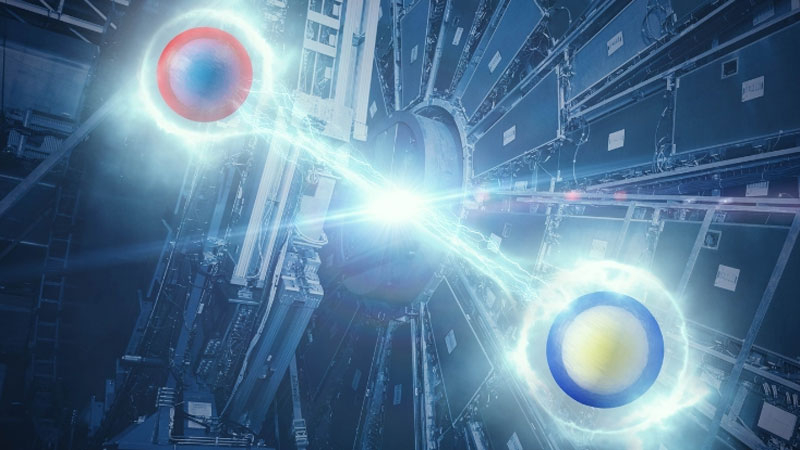Top quarks, or t-quarks, were discovered just 30 years ago. They are extremely massive compared to other elementary particles in the Standard Model. This makes them unique and mysterious, opening up prospects for new discoveries in the field of physics – unknown interactions or particles. By unlocking the secrets of top quarks, scientists were able to quantumly entangle their pairs for the first time, which happened at the Large Hadron Collider without extreme cooling of the environment.

Artist’s rendering of a pair of entangled top quarks. Image source: CERN
Until now, researchers have created quantum entanglement in light particles at low energies. Usually these were photons. Quantum entanglement means that we can recognize some of the quantum properties of one particle (such as a photon) from the detectable properties of the other particle in the entangled pair, even if the first is at the edge of the Universe. In this case, no transfer of information or energy occurs. We simply become aware of certain quantum characteristics of a photon from an entangled pair.
Top quarks are particles of a completely different scale in terms of mass and energy. They were the last of the six types of quarks to be discovered. The mass of a top quark is 184 times the mass of a proton and, for example, significantly greater than the mass of a tungsten atom. To entangle a pair of top quarks means reaching an energy level above 10 TeV (teraelectronvolt). In the case of photons or other light particles (photons have no mass), to prevent the destruction of quantum states and entanglement, experimental systems are cooled to absolute zero to minimize all internal vibrations. This is a known problem with quantum computing, which suffers from short coherence times.
This was not required to entangle pairs of top quarks. The authors of the study from the ATLAS collaboration created the necessary conditions for this during an experiment at the LHC collider. An article about the work was published in the journal Nature. Scientists from the CMS collaboration have also done similar work independently, but their work is currently only available on the preprint website arXiv.orgc.
Top quarks, due to their properties, have proven to be a convenient object for studying entanglement using relatively simple means compared to other cases, and at a completely new energy level. Although it is worth recognizing that the Large Hadron Collider can hardly be called a “handy tool,” this is unlikely to allow experiments with top quarks to be transferred into the practical plane of quantum computing or cryptography in the near future. However, studying quantum entanglement at such a high energy level is not just a step forward, it is a breakthrough!